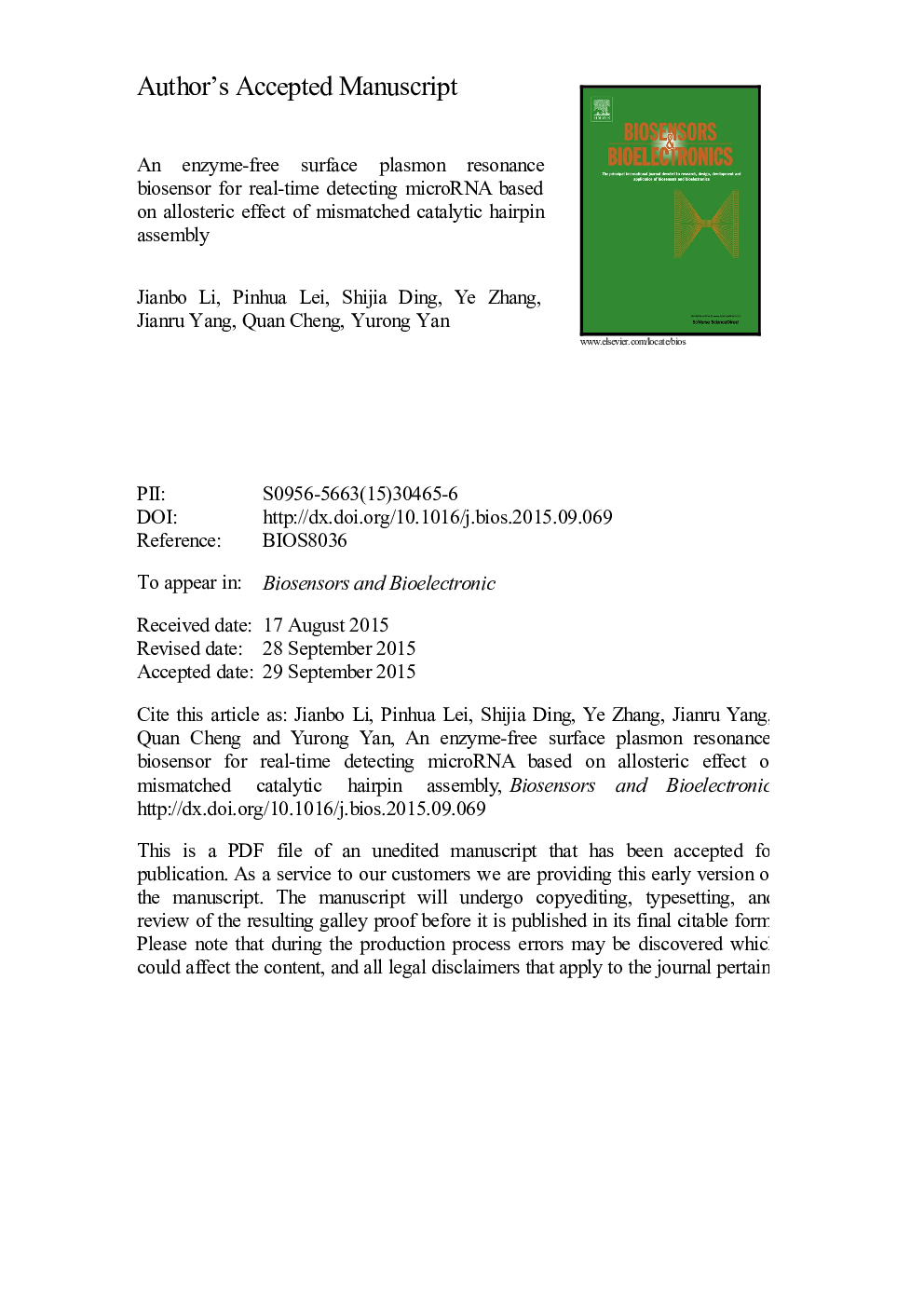| Article ID | Journal | Published Year | Pages | File Type |
|---|---|---|---|---|
| 7231525 | Biosensors and Bioelectronics | 2016 | 14 Pages |
Abstract
MicroRNAs (miRNAs) play significant regulatory roles in a variety of diseases and have been emerging as a group of promising biomarkers in cancer cells. Here, a novel and simple surface plasmon resonance (SPR) biosensor was developed for specific and highly sensitive detection of target miRNA employing the mismatched catalytic hairpin assembly (CHA) amplification coupling with programmable streptavidin aptamer (SA-aptamer). The presence of target miRNA triggered the allosteric effect of CHA amplification, which brought about the recycling of the target miRNA and produced large amounts of CHA products and activated SA-aptemers. Meanwhile, the plentiful CHA products could hybridize with the capture probes on the sensor chip, and the massive activated SA-aptamers could capture the streptavidin to achieve enhancement and output of the detection signal. Benefiting from the outstanding performance of the enzyme-free CHA amplification and non-label SPR biosensor, the established biosensor exhibited simplified process, high sensitivity and good selectivity. Under the optimal conditions, this designed strategy could detect target miRNA down to 1Â pM with a dynamic range from 5Â pM to 100Â nM, and was successfully applied to the determination of target miRNA spiked into human total RNA samples. Thus, this SPR-based biosensor might become a potential alternative tool for miRNA detection in medical research and early clinical diagnosis.
Related Topics
Physical Sciences and Engineering
Chemistry
Analytical Chemistry
Authors
Jianbo Li, Pinhua Lei, Shijia Ding, Ye Zhang, Jianru Yang, Quan Cheng, Yurong Yan,
